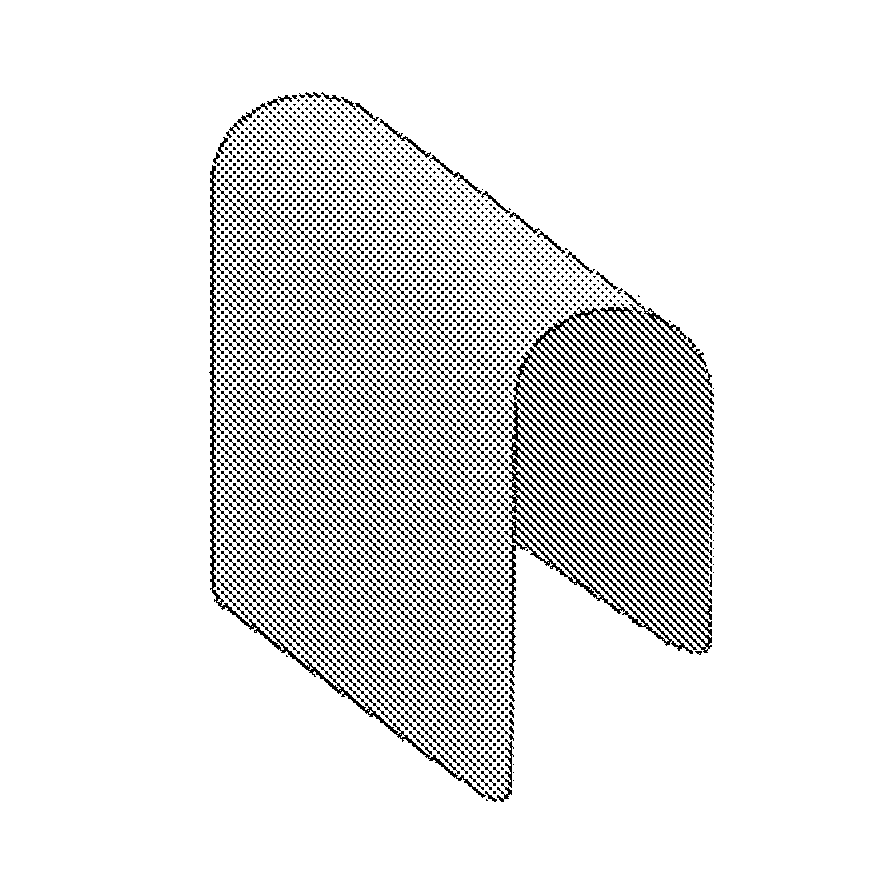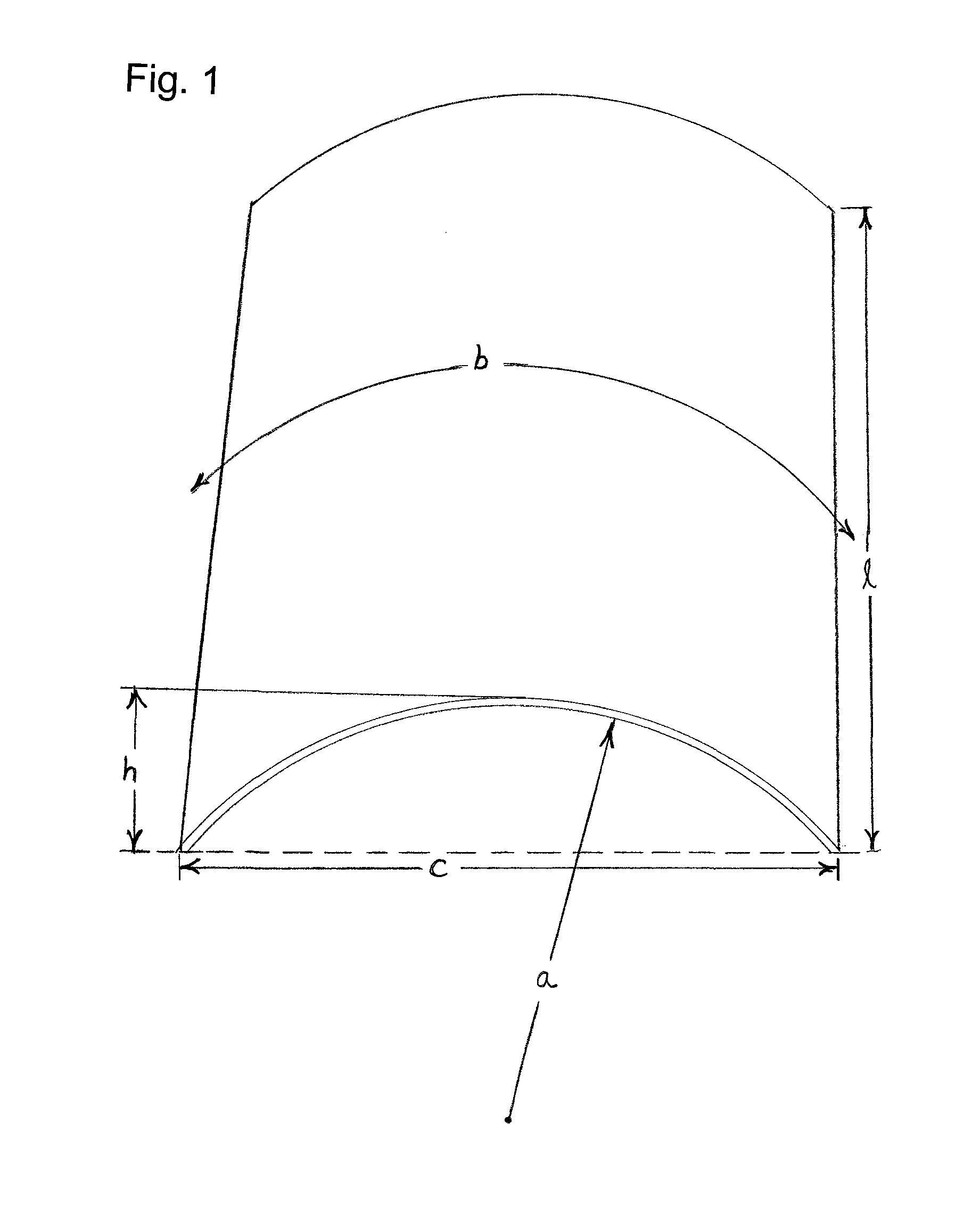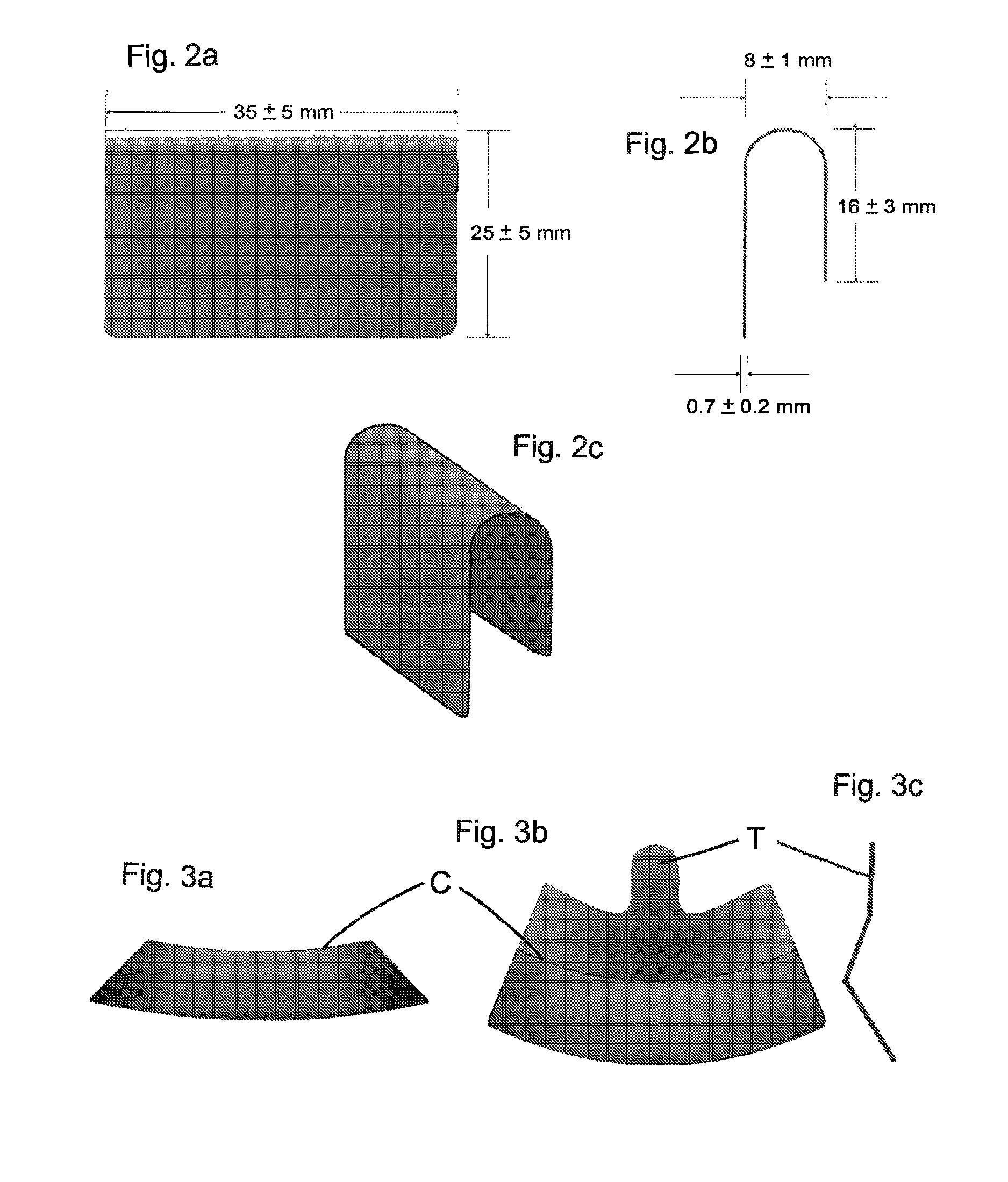Self-supporting collagen tunnel for guided tissue regeneration and method of using same
a collagen tunnel and guided tissue technology, applied in the direction of prosthesis, biocide, peptide/protein ingredients, etc., can solve the problems of low tensile strength and stiffness, and affecting the regeneration effect of tissue augmentation materials. , to achieve the effect of strengthening/stiffering collagen membrane, weak collagen structure and increasing strength
- Summary
- Abstract
- Description
- Claims
- Application Information
AI Technical Summary
Benefits of technology
Problems solved by technology
Method used
Image
Examples
Embodiment Construction
[0033]FIG. 1 shows an illustrative collagen tunnel containment member according to the present invention. The containment member of the invention is comprised of single curved sheet of collagen having sufficient strength and structural integrity to be self-supporting. By “self-supporting” is meant that the collagen sheet must be sufficiently rigid that when the longitudinal edges of the curved collagen sheet are placed on a flat surface, it will not limply collapse against the surface, but instead will maintain its curved configuration with the central portion of the curved sheet elevated above the supporting surface.
[0034]However, the collagen sheet should not be absolutely rigid. Rather it is desirable for the collagen tunnel containment member to have sufficient flexibility that the oral surgeon can bend it to a desired configuration to fit the surgical installation site without cracking or creasing. After placement by the surgeon, the collagen tunnel can be held in the desired l...
PUM
| Property | Measurement | Unit |
|---|---|---|
| length | aaaaa | aaaaa |
| length | aaaaa | aaaaa |
| porosity | aaaaa | aaaaa |
Abstract
Description
Claims
Application Information
 Login to View More
Login to View More - R&D
- Intellectual Property
- Life Sciences
- Materials
- Tech Scout
- Unparalleled Data Quality
- Higher Quality Content
- 60% Fewer Hallucinations
Browse by: Latest US Patents, China's latest patents, Technical Efficacy Thesaurus, Application Domain, Technology Topic, Popular Technical Reports.
© 2025 PatSnap. All rights reserved.Legal|Privacy policy|Modern Slavery Act Transparency Statement|Sitemap|About US| Contact US: help@patsnap.com



